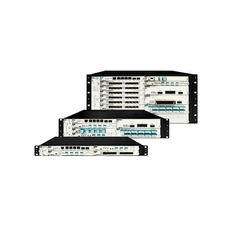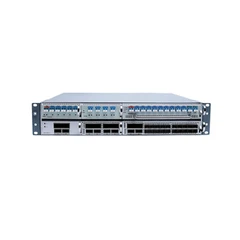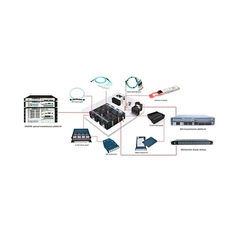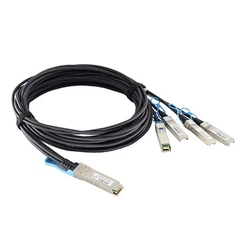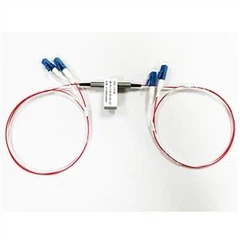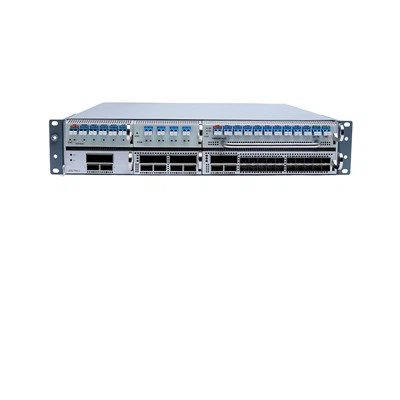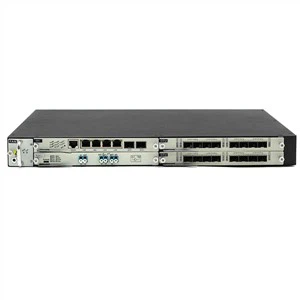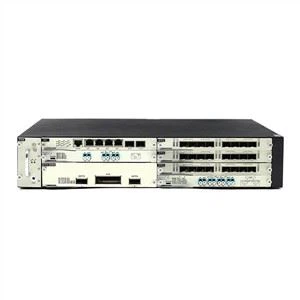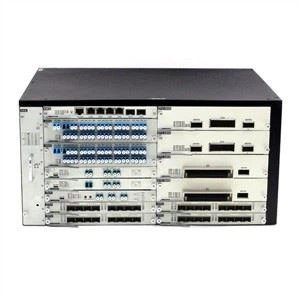WDM --- wavelenth division multiplexing is a technology that combines two or more optical carrier signals of different wavelengths at the transmitting end through multiplexer and coupled to the same optical fiber of optical line for transmission; at the receiving end, optical carrier waves of various wavelengths are separated by demultiplexer, and then the optical receiver makes further processing to recover the original signal. The technology of transmitting two or more optical signals of different wavelengths in the same fiber is called wavelength division multiplexing.
Different wavelengths of light have different transmission losses in optical fibers. In order to reduce the loss as much as possible and ensure the transmission effect, it is necessary to find the most suitable wavelength for transmission. After a long time of exploration and testing, the signal distortion caused by dispersion is the least and the loss is the lowest in 1260nm-1625nm wavelength range, which is the most suitable for transmission in optical fiber.
The possible wavelengths of optical fiber can be divided into several bands. Each band is used as an independent channel to transmit a predetermined wavelength optical signal. ITU-T divides the frequency band of single-mode fiber above 1260nm into O, E, S, C, l and U.

What is o band?
The o-band is the original band 1260-1360 nm. O-band is the first wavelength band used in optical communication in history, and the signal distortion (due to dispersion) is the least.
What is E-band?
The E-band (extended wavelength range: 1360-1460 nm) is the least common of these bands. E-band is mainly used as the extension of o-band, but it is rarely used. The main reason is that many existing optical cables show high attenuation in E-band and the manufacturing process is very energy-consuming, so the use of E-band in optical communication is limited.
What is S band?
The fiber loss in S-band (short wave band: 1460-1530 nm) is lower than that in o-band. S-band is used as many PON (passive optical network) systems.
What is C band?
The C-band ranges from 1530 nm to 1565 nm, representing the conventional band. Optical fiber has the lowest loss in C-band, and has a great advantage in long-distance transmission system. It is usually used in many metro, long-distance, ultra long-distance and submarine optical transmission systems combined with WDM and EDFA technology. As the transmission distance becomes longer and fiber amplifiers are used instead of optical to electron to optical repeaters, the C-band becomes more and more important. With the emergence of DWDM (dense wavelength division multiplexing) which can make multiple signals share a single fiber, the use of C-band has been expanded.
What is L band?
The L-band (long wavelength: 1565-1625 nm) is the second lowest loss wavelength band, which is often used when the C-band is insufficient to meet the bandwidth requirements. With the wide use of B-doped fiber amplifiers (EDFA), DWDM systems have been extended to L-band, which are often used to expand the capacity of terrestrial DWDM optical networks. Now it has been introduced to submarine cable operators to do the same thing - to expand the total capacity of the submarine cable.
Because the transmission attenuation loss of C-band and L-band is the minimum, the signal light in DWDM system is usually in C-band and L-band. In addition to the o-band to the L-band, there are two other bands, namely 850 nm band and U-Band (ultra long band: 1625-1675 nm). The 850 nm band is the main wavelength of multimode fiber communication system, combined with VCSEL (vertical cavity surface emitting laser). U-Band is mainly used for network monitoring.
According to different wavelength modes, WDM technology can be divided into WDM, CWDM and DWDM. The wavelength range of 1470-1610nm is usually used. DWDM channel spacing is more dense, using C-band (1530 nm-1565 nm) and L-band (1570 nm-1610 nm) transmission window. The wavelengths of 1310 and 1550 nm are generally used in ordinary WDM.

Wavelength assignment of 40 wave DWDM
 Transmission mode
Transmission mode


With the growth of FTTH Applications, C-band and L-band, which are most commonly used in optical network, will play an increasingly important role in optical transmission system.
WDM technology can significantly improve the transmission capacity of optical fiber and improve the utilization of optical fiber resources. The most direct impact on life is that we surf the Internet, watch TV and make phone calls more quickly and smoothly.
HTF's optical products are customized, the quality is guaranteed, and the accessories are imported.
Contact: support@htfuture.com
Skype :sales5_ 1909,WeChat :16635025029

